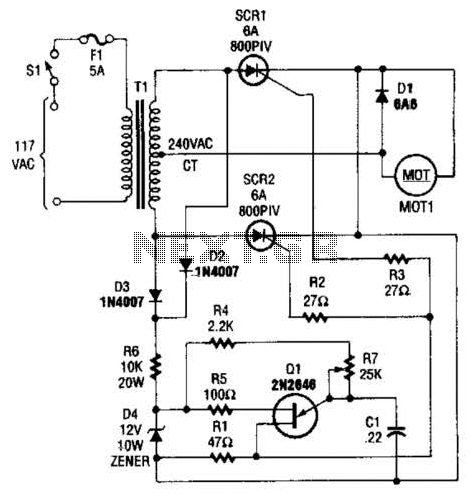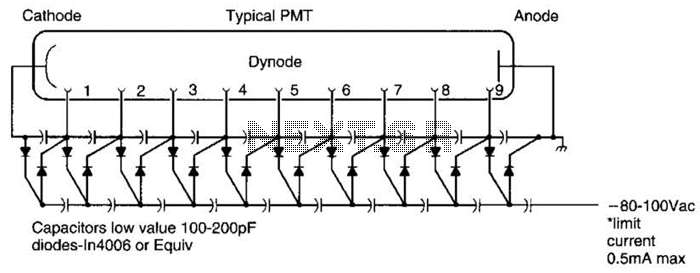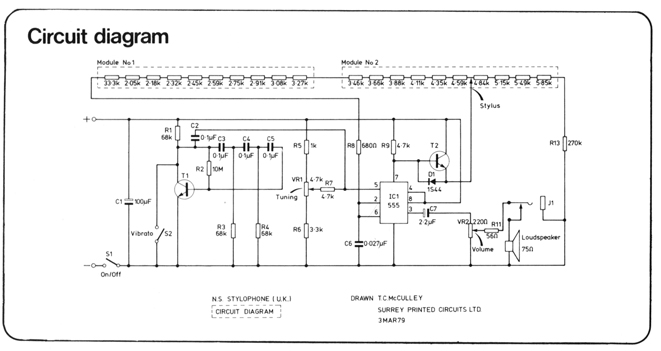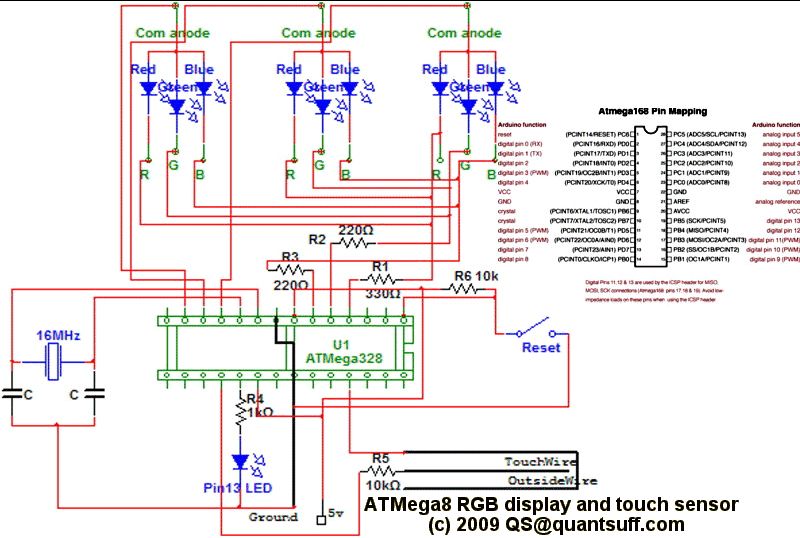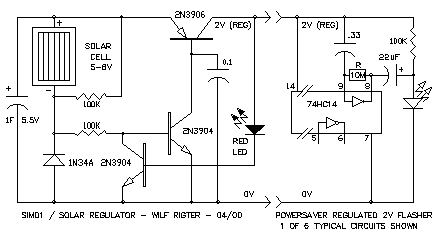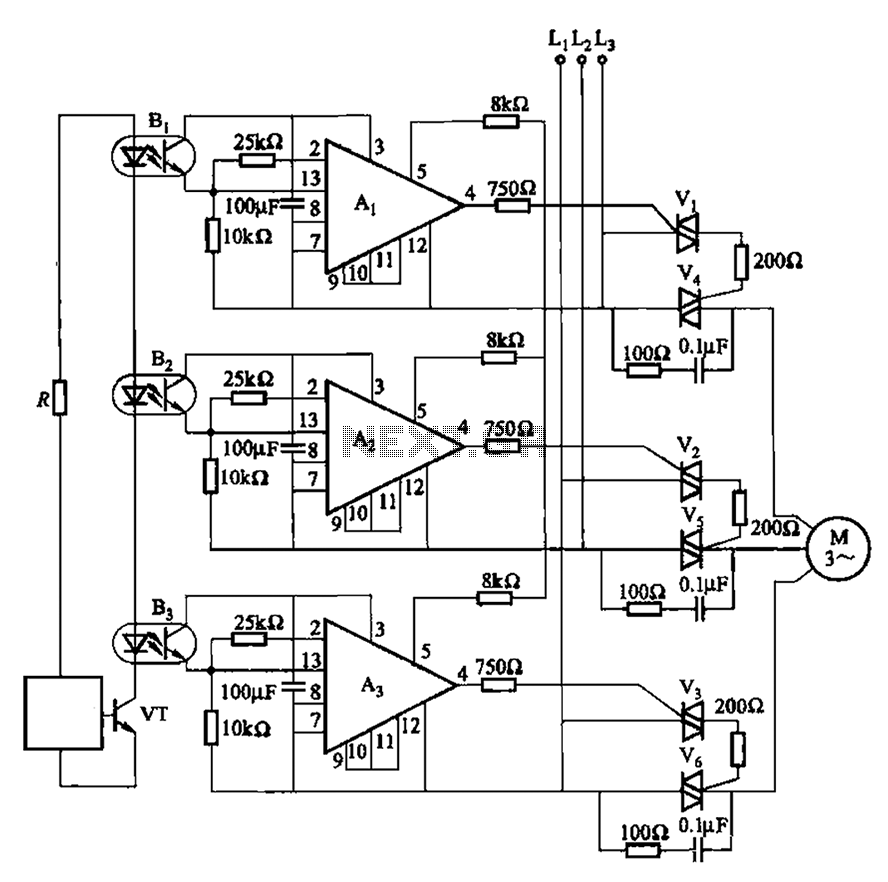
Temperature-Controlled Switch circuit
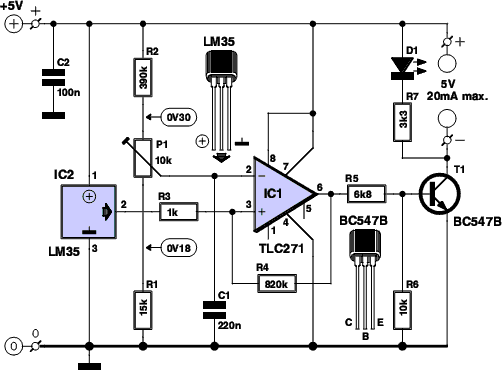
A switch that is controlled by its ambient temperature operates without human intervention, except during the assembly of the electronic thermostat. This thermally controlled switch has numerous practical applications. For instance, if the internal temperature of a computer rises excessively, the circuit can activate an additional fan. Similarly, it can be utilized to automatically turn on an electric heater when the room temperature drops too low. The potential applications for the described thermostat are extensive.
The thermally controlled switch operates based on a temperature-sensitive component, typically a thermistor or a bimetallic strip, which responds to changes in ambient temperature. The circuit design includes a comparator that monitors the voltage across the thermistor. When the temperature exceeds a predetermined threshold, the comparator activates a relay or a transistor switch, which in turn can control larger loads such as fans or heaters.
In a typical configuration, the thermistor is placed in a location that accurately reflects the ambient temperature of the environment. The circuit may also include a potentiometer, allowing for calibration of the temperature setpoint to suit specific needs. Additional features may include hysteresis to prevent rapid cycling of the switch, ensuring stable operation.
Power supply considerations are crucial; the circuit may be powered by a low-voltage source, such as a battery or a wall adapter, ensuring safety and efficiency. Protection components, such as fuses or diodes, should be included to safeguard against overcurrent or reverse polarity conditions.
The applications for such a thermostat are diverse, ranging from climate control in residential and commercial buildings to temperature regulation in electronic devices and appliances. The versatility and automation provided by a thermally controlled switch enhance energy efficiency and user convenience in various systems.It sounds rather mysterious: a switch that is controlled by its ambient temperature. All without the touch of a human hand, except for when you re building this sort of electronic thermostat. There are a lot of handy uses for a thermally controlled switch. If the temperature inside your PC gets too high sometimes, the circuit can switch on an extra fan. You can also use to switch on an electric heater automatically if the room temperature is too low. There are innumerable potential applications for the thermostat described here.. 🔗 External reference
The thermally controlled switch operates based on a temperature-sensitive component, typically a thermistor or a bimetallic strip, which responds to changes in ambient temperature. The circuit design includes a comparator that monitors the voltage across the thermistor. When the temperature exceeds a predetermined threshold, the comparator activates a relay or a transistor switch, which in turn can control larger loads such as fans or heaters.
In a typical configuration, the thermistor is placed in a location that accurately reflects the ambient temperature of the environment. The circuit may also include a potentiometer, allowing for calibration of the temperature setpoint to suit specific needs. Additional features may include hysteresis to prevent rapid cycling of the switch, ensuring stable operation.
Power supply considerations are crucial; the circuit may be powered by a low-voltage source, such as a battery or a wall adapter, ensuring safety and efficiency. Protection components, such as fuses or diodes, should be included to safeguard against overcurrent or reverse polarity conditions.
The applications for such a thermostat are diverse, ranging from climate control in residential and commercial buildings to temperature regulation in electronic devices and appliances. The versatility and automation provided by a thermally controlled switch enhance energy efficiency and user convenience in various systems.It sounds rather mysterious: a switch that is controlled by its ambient temperature. All without the touch of a human hand, except for when you re building this sort of electronic thermostat. There are a lot of handy uses for a thermally controlled switch. If the temperature inside your PC gets too high sometimes, the circuit can switch on an extra fan. You can also use to switch on an electric heater automatically if the room temperature is too low. There are innumerable potential applications for the thermostat described here.. 🔗 External reference
